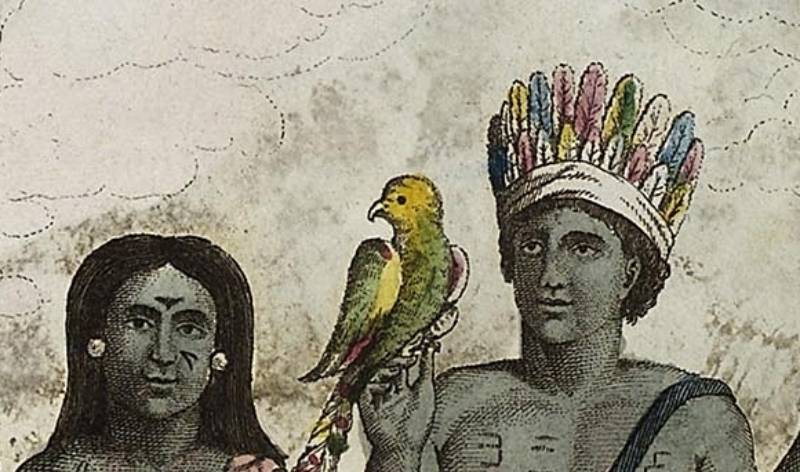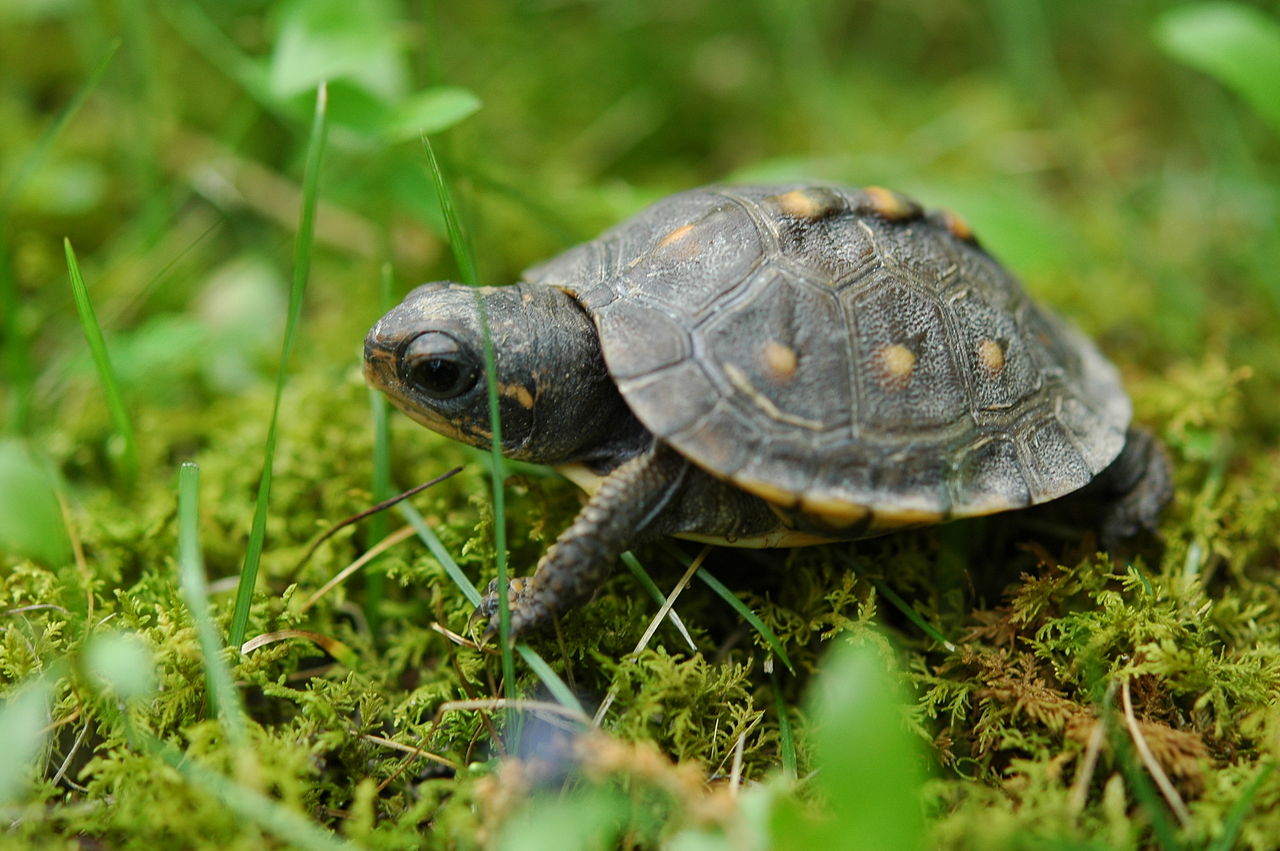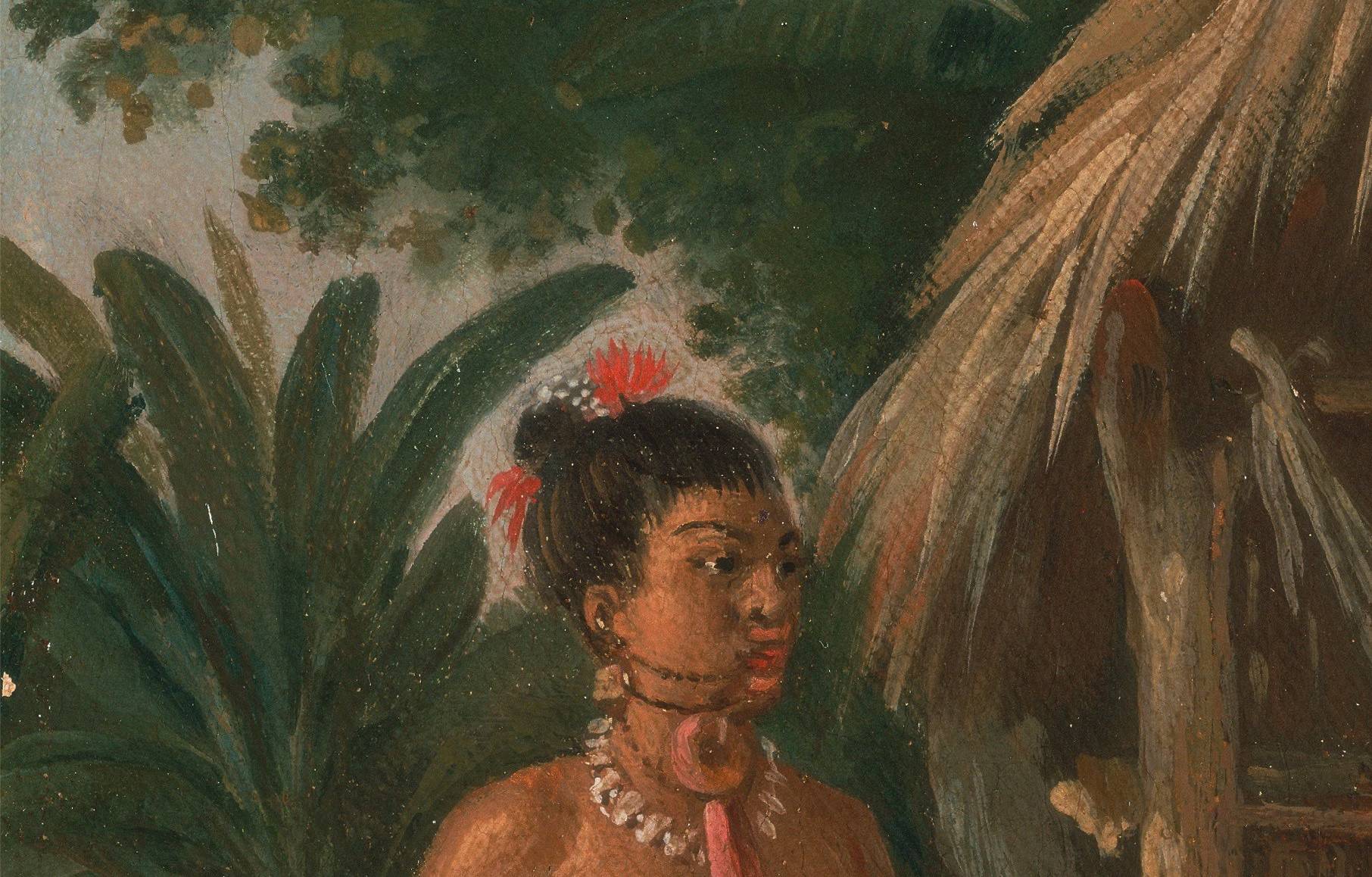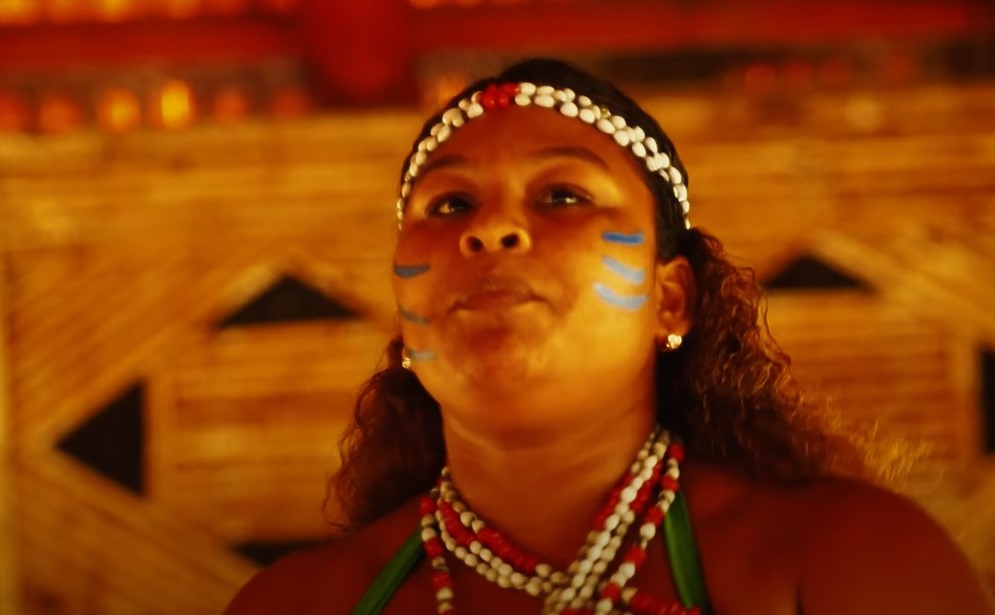The Infamous Caribbean Tribe
The Kalinago People belong to a Caribbean tribe historically known as violent and vicious cannibals.
They were born warriors who continuously engaged in battle with neighboring tribes—and some of them still exist today.

Who are they?
The Kalinago people are an indigenous people of South America, who migrated to Caribbean Islands many years ago.
They were one of the dominant groups in the Caribbean, at the time of Spanish contact.
 John Gabriel Stedman, Wikimedia Commons
John Gabriel Stedman, Wikimedia Commons
What other names do they go by?
The Kalinago people were called Caribs or Island Caribs by the Europeans who encountered them while exploring those islands; however, the Caribs referred to themselves as Kalinago—their original name.
 Agostino Brunias, Wikimedia Commons
Agostino Brunias, Wikimedia Commons
What does their name mean?
The Island Carib word karibna meant "person", although it became the origin of the English word "cannibal"—which we will soon find out why.
 Peter d'Aprix, CC BY-SA 3.0, Wikimedia Commons
Peter d'Aprix, CC BY-SA 3.0, Wikimedia Commons
Where do they live?
The Kalinago people lived throughout north-eastern South America, Trinidad and Tobago, Barbados, the Windward Islands, Dominica, and possibly the southern Leeward Islands.
 Kalamazadkhan, CC BY-SA 3.0, Wikimedia Commons
Kalamazadkhan, CC BY-SA 3.0, Wikimedia Commons
What did their houses look like?
The Kalinago’s houses were simple straw huts with large thatched roofs and thick wooden beams holding them up. Some were built with straw reaching all the way to the ground, and others were more open on the sides.
What did they sleep in?
The Kalinago people slept in handmade hammocks, but they also had beds called amais.
What language did they speak?
The Kalinago people had three different languages; two spoken by the men and one by the women.
 Roland Bonaparte, Wikimedia Commons
Roland Bonaparte, Wikimedia Commons
The Women’s Language
The women spoke Arawak. Though their language was partially mixed with the Igneri language as there were captured Igneri women living among them.
The Men’s Language
The men spoke two different tongues because one was needed for daily life and the other was used for discussing battle plans among their troops. It was also used for trading, and the women could not understand it.
 Roland Bonaparte, Wikimedia Commons
Roland Bonaparte, Wikimedia Commons
What did they look like?
According to Dominican Historian Dr. Lennox Honychurch, the Kalinago were similar to other Amazonian tribes from South America, with a light brown complexion, dark eyes and distinctive straight black hair.
 Roland Bonaparte, Wikimedia Commons
Roland Bonaparte, Wikimedia Commons
What did they wear?
Traditionally, they wore no clothing except for feathers and ornaments used to style their hair.
The men wore cotton aprons around their waist during special occasions and rituals.
 Prince Roland Bonaparte, Wikimedia Commons
Prince Roland Bonaparte, Wikimedia Commons
What did the women wear?
The women tied bands around their legs, below their knees and at the ankle, in order to tighten their calves and make them appear to be bigger.
Also, only married women were required to wear any sort of clothing or coverings.
 Pierre Barrère, Wikimedia Commons
Pierre Barrère, Wikimedia Commons
Why did they do that?
The women wanted to make their calves look bigger because in their culture it was seen as attractive.
There is another physical trait that their culture finds attractive—and it’s pretty drastic.
 P.J. Benoît, Wikimedia Commons
P.J. Benoît, Wikimedia Commons
Babies Heads Shape
The Kalinago believe babies should have flat heads. The women would deliberately flatten the heads of their babies while their skull was still soft and not fully developed. This was said to make a stronger forehead and also a more handsome baby.
It may have also been done to strengthen the skull in preparation for battles later in life.
How else did they adorn their bodies?
The Kalinago were big into body painting and piercing. They used red, white, black and ochre colours to design their skins with different patterns, and shell and bone ornaments in body piercing.
 Internet Archive Book Images, Wikimedia Commons
Internet Archive Book Images, Wikimedia Commons
What did they eat?
Traditionally, the Kalinago people were hunter-gatherers and farmers, with the majority of their diet consisting of plants, such as yams, cassavas and potatoes.
They hunted wild animals and fished.
 Marco Schmidt, CC BY-SA 2.5, Wikimedia Commons
Marco Schmidt, CC BY-SA 2.5, Wikimedia Commons
What did they not eat?
The Kalinago specifically did not eat turtles. It was believed that the consumption of turtle meat would make them stupid.
 John, CC BY 2.0, Wikimedia Commons
John, CC BY 2.0, Wikimedia Commons
What do they drink?
Aside from natural spring water, the Kalinago were known to enjoy a drink called ouicou—a cassava beer with strong alcoholic content.
In fact, they were known to get pretty buzzed during festivals and ceremonies.
 P.J. Benoît, Wikimedia Commons
P.J. Benoît, Wikimedia Commons
How did they hunt?
The Kalinago men used clubs, spears, blades, and bows and arrows. The head of their arrows were poisoned, barbed and detachable.
The blades were usually only used violently when they had been drinking.
 Pierre-Jacques Benoît, Wikimedia Commons
Pierre-Jacques Benoît, Wikimedia Commons
What were the men’s roles?
The men in the Kalinago tribes were responsible for man things: fishing, hunting, fighting, making equipment and tools, and crafting canoes.
They also did the exploring of other islands, and every Kalinago man was a trained warrior.
 Internet Archive Book Images, Wikimedia Commons
Internet Archive Book Images, Wikimedia Commons
What were the women’s roles?
The women were responsible for baring and raising the children, planting crops, gathering fruits and vegetables, weaving clothing out of cotton, and preparing food.
 Yale Center for British Art, Wikimedia Commons
Yale Center for British Art, Wikimedia Commons
What were the women not allowed to do?
The women were not allowed to learn the men’s language, and they were also not allowed to eat with their husband. They served him, and went elsewhere to eat.
The women also did not sleep with the men. Both genders slept separately.
 Yale Center for British Art, Wikimedia Commons
Yale Center for British Art, Wikimedia Commons
What religion did they practice?
The Kalinago people believed that there were gods in nature. Two of them being Frog Woman and Bat Man, who were seasonable gods.
 Grenada Film Company, NEW LAND THE KALINAGO DREAM (2022)
Grenada Film Company, NEW LAND THE KALINAGO DREAM (2022)
What did Frog Woman do?
Frog Woman was believed to be the god of the rainy season, and they would worship her whenever the dry season had arrived.
They did this by sacrificing animals captured from hunting, and their captives from other villages.
Why did they sacrifice living beings?
Live sacrifices were said to please the gods and prevent hostility from evil spirits such as mabouya, and the hurricane spirit.
 Grenada Film Company, NEW LAND THE KALINAGO DREAM (2022)
Grenada Film Company, NEW LAND THE KALINAGO DREAM (2022)
What other spirits were significant?
Kanaima was an evil spirit beneficial to the Kalinago for when they sought revenge on someone who hurt their family.
This spirit is said to possess people, causing them to act like vicious animals and filling them with violent, uncontrollable anger suitable for murderous vengeance.
 John Hill, CC BY-SA 4.0, Wikimedia Commons
John Hill, CC BY-SA 4.0, Wikimedia Commons
What would the Kalinago do?
The Kalinago man would call upon the spirit to enter him by taking certain substances or performing rituals. Once the spirit enters his body, he goes on his quest for revenge.
 Grenada Film Company, NEW LAND THE KALINAGO DREAM (2022)
Grenada Film Company, NEW LAND THE KALINAGO DREAM (2022)
How dangerous were the Kalinago people?
The Kalinago people were known to be fearsome warriors who raided neighboring islands, killing their men and capturing their wives.
 Universal History Archive, Getty Images
Universal History Archive, Getty Images
What did they do with the women?
The women of other tribes were taken back to the village and used as servants and wives in the Kalinago village.
The captured women of European groups were usually captured very easily, so they were treated as inferior due to their weakness.
 Nature_island_beauty, Shutterstock
Nature_island_beauty, Shutterstock
What else did they do to their victims?
Live captives were sometimes used as sacrifices for the gods—both men and women from other tribes they had raided.
But that’s not all they did to their captives.
 Universal History Archive, Getty Images
Universal History Archive, Getty Images
Cannibalism
The Kalinago were known to be vicious and vengeful, and when an enemy was captured, they allegedly practiced cannibalism—by first roasting their captive over a large fire.
 Yale Center for British Art, Wikimedia Commons
Yale Center for British Art, Wikimedia Commons
How much human flesh did they actually consume?
Some sources believe that the majority of their sustenance in the early years was human flesh.
Others believe it was only done to enemies—however they were known as viscous warriors, so perhaps they had many.
 Grenada Film Company, NEW LAND THE KALINAGO DREAM (2022)
Grenada Film Company, NEW LAND THE KALINAGO DREAM (2022)
Were they the only cannibals?
Not at all, in fact, it is believed that many of the tribes they battled also practiced cannibalism.
One source wrote, “They eat human flesh and wage continual war against each other, the victors eating the vanquished…”
 Grenada Film Company, NEW LAND THE KALINAGO DREAM (2022)
Grenada Film Company, NEW LAND THE KALINAGO DREAM (2022)
Notable Incident of Cannibalism
In 1528, Italian explorer Giovanni da Verrazzano was on his third voyage to North America when he was allegedly captured and eaten by Kalinago natives on what is now Guadeloupe.
 F. Allegrini, Wikimedia Commons
F. Allegrini, Wikimedia Commons
How were their captives treated?
After an ambush, the warriors would return with numerous captives. Those captives were kept in confinement and forced into slavery until they it was their turn to be eaten.
But that isn’t even the worst part.
 Prince Roland Bonaparte, Wikimedia Commons
Prince Roland Bonaparte, Wikimedia Commons
What happened to captives they did not want to keep?
Anyone they took back to the village that they did not want to keep as slaves, or integrate into their society, was tied to a tree and shot full of arrows before their bodies were placed in the fire.
This included women and children.
 Universal History Archive, Getty Images
Universal History Archive, Getty Images
What else did they do?
The Kalinago people were brutal to their enemies. Some men were taken back to the village where they were first washed, dressed, and well fed, before they were tied up.
After being tied, Kalinago women were come and perform a dance for them.
 Grenada Film Company, NEW LAND THE KALINAGO DREAM (2022)
Grenada Film Company, NEW LAND THE KALINAGO DREAM (2022)
What happened after the dance?
After the dance, the men were inflicted with severe pain—too graphic to tell. After their demise, the body was sectioned off for eating.
What did they do to their own tribe members?
When a Kalinago tribe member passes, the bones are kept and hung up in their houses as they believed their loved ones would guide and protect them.
 Agostino Brunias , Wikimedia Commons
Agostino Brunias , Wikimedia Commons
What else are they known for?
On a more positive note, the Kalinago people were known for their arts and crafts, and how skilled they were with their hands.
They made musical instruments from wood and gorges, woven baskets from reed, and kitchen utensils from wood. They painted pottery with ground colors and symbolic images.
 Dirk.heldmaier, CC BY-SA 3.0, Wikimedia Commons
Dirk.heldmaier, CC BY-SA 3.0, Wikimedia Commons
Kalinago Canoes
Hand carved wooden canoes were a significant aspect of the Kalinago's material culture and economy. They were used as a main source of transportation, as well as for fishing.
The canoes were crafted specifically, with different height and thickness serving different purposes.
 Universal History Archive, Getty Images
Universal History Archive, Getty Images
What ultimately happened to the Kalinago people?
In the 1600s the Kalinago people were overwhelmed with French forces imposing colonial rule on them. They revolted, but ultimately did not win. Many lost their lives and the survivors were taken captive and expelled from the island.
 Unknown author, Wikimedia Commons
Unknown author, Wikimedia Commons
Does this tribe still exist today?
Today, there are around 3,000 Kalinago people surviving in the Kalinago Territory in northeast Dominica. However, only 70 of them considered themselves as pure.
 Grenada Film Company, NEW LAND THE KALINAGO DREAM (2022)
Grenada Film Company, NEW LAND THE KALINAGO DREAM (2022)
Where do they live today?
Today, most of them are concentrated at the Carib Territory/reservation in Dominica. It was established in 1903 and is the largest reserve in the Caribbean, with an area of 3,700-acres of land.
 Grenada Film Company, NEW LAND THE KALINAGO DREAM (2022)
Grenada Film Company, NEW LAND THE KALINAGO DREAM (2022)
Do they still look the same?
Many Kalinago today are not pure blood, as they have been mixed with other African descendants and other races due to intermarriages.
Many today have dark skin and brown hair, which is quite different than Kalinago from the past, who had light brown skin and black hair.
 GT Caribbean Network, Kalinago
GT Caribbean Network, Kalinago
Do they still practice their religion?
Sadly, they no longer have the same religious beliefs like before, as many have converted to Christianity.
The term ‘Mabouya’ is no longer used in reference to an evil spirit, but is the local name for the common Lizard.
 GT Caribbean Network, Kalinago
GT Caribbean Network, Kalinago
What about cultural practices?
Some traditional ways of cooking are still being used today, though stove is common as it is much more convenient.
And many Kalinago still hunt and forage for fruits and vegetables.
 GT Caribbean Network, Kalinago
GT Caribbean Network, Kalinago
What do they wear now?
Most Kalinago’s today wear modern clothing and live in modern houses. Tribal clothing may sometimes be worn on special occasions, though.
 GT Caribbean Network, Kalinago
GT Caribbean Network, Kalinago
Have they become victim to tourism?
Unfortunately, yes. There are still some traditional housing in the Carib Territory, which makes for an intriguing tourist attraction.
The inhabitants create traditional baskets and trinkets to sell to tourists.
 GT Caribbean Network, Kalinago
GT Caribbean Network, Kalinago













